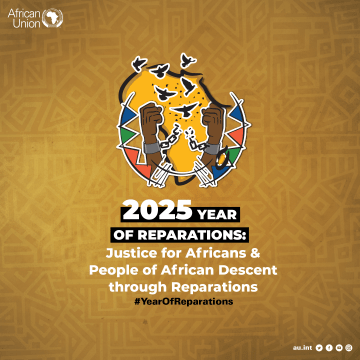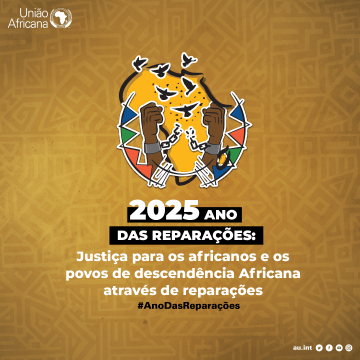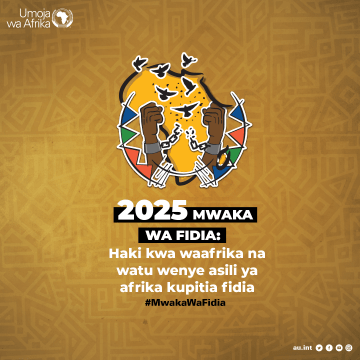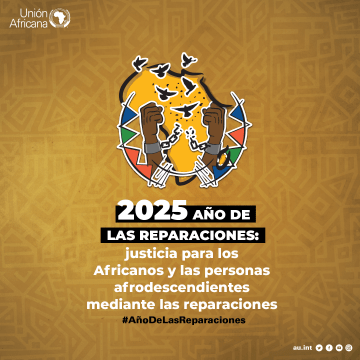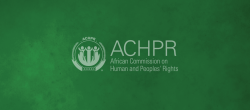REPORT OF THE MECHANISM OF THE SPECIAL RAPPORTEUR ON THE RIGHTS OF REFUGEES, ASYLUM SEAKERS, AND INTERNALLY DISPLACED AND MIGRANTS IN AFRICA SINCE ITS CREATION
By
Madam Maya SAHLI-FADEL
Commissioner, Special Rapporteur on Refugees, Asylum Seekers, Displaced Persons and Migrants in Africa.
52nd Ordinary Session of the African commission on Human and Peoples’ rights
Yamoussoukro, Cote d’Ivoire, from 09 to 22 October 2012
I. Introduction
1. The present report falls within the framework of the commemoration of the 25th Anniversary of the African commission on Human and Peoples’ Rights (the Commission). It is in conformity with Rule 23 (3) of the Rules of Procedure of the commission and takes into consideration the recommendations presented by the commission during its 12 th extraordinary session, that is, upholding the achievements by special mechanisms since their creation, the challenges they have encountered, and the way forward for a better efficiency of the mechanism, as well as recommendations.
II. Legal Framework for the protection of refugees, asylum seekers, displaced persons and migrants in Africa.
2.1.Legal Framework for the protection of refugees and asylum seekers
2. The International legal framework for the protection of refugees is provided for by the Convention on the status of Refugees adopted in 1951 as well as the Protocol adopted in New York on 31 January 1967.
3. Better still, African states, haven noted that the number of refugees was incessantly increasing , adopted in 1969 the OAU Convention governing the specific aspects of refugees in Africa., with the aim of implementing measures capable of reducing the difficult conditions of refugees with the prospect of ensuring them a better life and future . This convention not only prohibits refoulement, but also calls on state to accept refugees and provide them protection. It also states that “The provision of asylum to refugees is a peaceful and humanitarian act and should not be considered by another state as an unfriendly act”.
4. These three legal documents constitute the foundation for international refugee law and are therefore key instruments for the protection of refugees[1] .
5. Aside these legal documents specific to refugees, other international instruments make mention of the protection of persons who have left their countries for reasons of persecution or grave breaches to human rights: notably the Universal Declaration on Human Rights, the International Covenant on Civil and Political Rights, the convention against torture or other cruel, inhuman and degrading Treatment as well as the African Charter on Human and peoples’ Rights.
6. The UNHCR Programme’s Executive committee has since its creation in 1975, through its yearly activities, adopted general conclusions in view of reinforcing the protection of refugees.
2.2. Legal framework for the protection of displaced persons
7. Displaced persons, contrary to refugees, are persons who have not crossed the borders a of country. It is a relatively recent phenomenon.
8. In a general way, displaced persons are primarily protected by national laws. To this end, they have the right to full protection by national laws and enjoy the rights that they confer, without any distinction that may result from their displaced situation. Displaced persons are also protected by international human rights law, and should they find themselves in a state involved in an internal or international armed conflict they shall be protected by international Humanitarian law.
9. In a specific way a few instruments have been endorsed for the protection of displaced persons. They are:
10. Guidelines of the HCR concerning persons displaced within their countries constitute a normative framework applicable to persons displaced within their country. It constitutes the first international norms expressly conceived to address the needs of displaced persons. Although these principles are based on existing international norms, they do not have binding obligations as treaties.
11. At the level of Africa, since 23 October 2009, a specific Convention on the internally displaced has been adopted. That is, the Convention on the Protection and Assistance of Internally Displaced Persons in Africa. This convention that is also known under the name of the Kampala Convention constitutes a positive development to be reported and without doubt the first instrument of its kind in the world, providing a regional fundamental framework for the protection of and assistance to displaced persons before during and after displacement.
12. The Convention is a major Benchmark. It is the first legal Instrument of its kind in the world to impose on states the obligation to protect and assist their displaced citizens.
13. At the African sub-regional level, there exist specific documents on internal displacement, notably the Great Lakes’ Convention on the protection and assistance to internally displaced persons within their country and the 2006 Protocol on Property of Persons Returning to their Place of origin. These two documents are applicable in all the countries of the sub-region that have ratified them.
2.3. Legal Framework for the protection of migrants.
14. At the International level, some Conventions have been drafted with the assistance of the United Nations. That is, the International Covenant on the Rights of Migrant Workers and their Families. This is a multilateral treaty of great reach, which gained inspiration from already existing binding treaties, research conducted by United Nations organs in charge of Human Rights, conclusions and recommendations of meetings of experts as well as debates and resolutions concerning issues of migrant workers addressed within United Nations Organs.
15. Two Conventions have been adopted within the framework of The International Labour Organisation (ILO) that is, Convention No.97 (revised) of 1949 that provides the foundation for an equal treatment between nationals and migrants in areas such as recruitment procedures, conditions of life and work, access to justice as well as taxes and social security laws.
16. It also refers to Convention No. 143 on Migrant Workers of 1975 that aims at regulating migration influx and eliminating irregular migration and to fight against human trafficking.
17. Migrants are also generally protected by general instruments on the protection of Human rights such as the Universal Declaration on Human Rights (Article 13), the International Covenant on Civil and Political Rights as well as the International Covenant on Economic Social and Cultural Rights.
18. At the regional level there is no specific instrument protecting migrants. However, within the framework of the free movement of persons and property, regional treaties have been adopted. Examples of such treaties are the ECOWAS and the East African Community Framework.
III. Present situation of refugees, asylum seekers, displaced persons and migrants in Africa.
19. The general situation with regards to the rights of refugees, asylum seekers, displaced persons and migrants in Africa has not significantly improved over the years.
20. Political Instability and conflicts that have occurred in some African Countries have increased the number of refugees, asylum seekers, displaced person and migrants. We would state as example the case of Mali, East of DRC, Sudan, Somalia, where the security and humanitarian situation have remained uncertain as a result of continuous conflicts that have caused massive movement of populations who leave their homes to seek for other peaceful places to reside.
21. The situation in Mali is a call for concern because of the continuous deterioration of the human rights situation and the aggravation of violence over the past days, particularly in the north of Mali. This violence have been characterised by grave violations of the rights to life, physical integrity and human dignity of civilian populations, through summary executions and extrajudicial killings, rape committed on women and young girls, as well as arms groups resorting to cruel and inhuman sanctions such as amputations, beating and destruction of property. Since the resumption of fighting in Northern Mali, thousands of persons have fled their homes within the country and outside of the country.
22. As concerns the east of DRC, the human rights situation is alarming. The security situation is continuously degrading as a result of the presence of armed groups worsened by the M23 rebellion , representing a great threat to the civilian population; threat that is perceivable through massive and forced displacement of thousands of Congolese civilians.
23. The problem of “illegal” or “Clandestine” migrants continues to be a major subject for concern. The illegal migration influx across the Atlantic and the Mediterranean and through the Golf of Eden has increased and at times caused loss to life due to bad travelling conditions.
IV. Progress achieved by the mechanism of the Special Rapporteur on Refugees, Asylum Seekers, Displaced Persons and Migrants in Africa.
24. The mechanism of the Special Rapporteur on refugees, asylum seekers, displaced persons and migrants in Africa, has realised some progress since its creation in 2004, of which the most significant is the implication of the mechanism in the drafting and adoption of the of the African Union Convention on the Protection and Assistance to displaced persons in Africa.
25. Since May 2007, the first holder of this mandate, Commissioner Bahame Tom Mukirya Nyaduge, had the privilege to be one of the legal experts of the African Union (AU)who prepared the draft document, being the initial project of the Convention on the protection and assistance to persons displaced in Africa. He also assisted in the negotiation process of the Kampala Convention as consultant to the different legal expert meetings of member states of the AU in charge of the drafting of the Kampala Convention. In October 2009, The Special Rapporteur participated in the special summit of the AU in Kampala, during which the Kampala Protocol was adopted.
V. Initiatives and strategies of the African Commission to address the problems of refugees, asylum seekers, displaced persons and migrants in Africa.
5.1. Creation of a special mechanism and its mandate
26. The occurrence of many armed conflicts, repressions, persecutions, grave and massive violations of human rights, many displacements caused by disasters as a result of the climate change or manmade, aggravated by poverty and misery , have caused an increase in the number of asylum seekers, of refugees and displaced persons in the African Continent.
27. In the face of this situation, the Commission has recognised that the already existing bodies of the AU are not properly prepared to address the issues of refugees, of asylum seekers, displaced persons and migrants. It is based on this reason that the commission decided to create a special mechanism on the issue.
28. The commission, being the principal organ for the promotion and protection of human rights in the continent has the prerogative by virtue of Article 23 of its Rules of Procedure, to create subsidiary mechanisms. It also determines the mandate and the terms of reference of each mechanism.
29. These mechanisms are technical organs that operate in an ad hoc manner and whose mandates may be modified or increased given the necessity to adapt their missions.
30. The mechanism of the Special Rapporteur on refugees, asylum seekers, Internaly displaced persons was created by the commission in its 35th Ordinary Session held in Banjul, The Gambia from the 21 May to the 4 June 2004.
31. The mandate of this mechanism was defined in Resolution 72 of the Commission, adopted during the 36th Ordinary Session held in Dakar, Senegal from the 23 November to 7 December 2004. It is summarised as follows:
- Seek, receive, and examine information on the situation of refugees, asylum seekers and displaced [persons in Africa and act accordingly;
- Conduct studies, research and other activities in this connection , in view of examining the ways and means by which to reinforce the protection of refugees, asylum seekers and displaced persons in Africa;
- Conduct fact finding missions, investigations, visits and other appropriate activities in refugees camps and in displaced persons camps;
- Assist member states of the AU to draft policies, rules and laws for a better protection of refugees, asylum seekers and displaced persons in Africa;
- Cooperate and engage in dialogue with member states, National Institutions on Human Rights, intergovernmental organisations and non-governmental organisations, regional and international mechanisms with interest in the promotion and protection of rights of refugees, asylum seekers and displaced persons;
- Draft and recommend efficient strategies to better protect the rights of refugees, asylum seekers, and displaced persons in Africa and ensure the monitoring of the recommendations;
- Raise awareness and promote the implementation of the United Nations Convention on refugees of 1951 as well as the OAU Convention regulating specific aspects of refugees in Africa of 1969;
- Submit reports during all Ordinary Sessions of the commission on the situation of refugees, asylum seekers and displaced persons in Africa.
32. Concerned by the increasing number of migrants who aim to leave their states, travelling by risky , dangerous and inhuman conditions, as well as by the grave violations to the right to life, to the right to liberty and dignity, amongst other rights to which refugees are subjected to, the commission, in its 39th ordinary session held in Banjul, the Gambia, from 11 to 25 May 2006, adopted a Resolution[2] that expanded the mandate of the Special rRapporteur on refugees, asylum seekers, displaced persons, to also include questions of migrants
33. It is important to indicate that, to this day, this mandate has been renewed several times. Since its creation 4 Commissioners have held the mandate in order to ensure the implementation of the mechanism. They are:
- Mr Bahame Tom Mukirya Nyanduga appointed by Resolution ACHPR/Res.72 (XXXV) 04 of 4 June 2004 ;
- Mr. Mohamed Fayek, appointed by Resolution 160 of 25 November 2009 ;
- Madame KAYITESI Zainabo Sylvie appointed by Resolution ACHPR/Res.180 (XLIX) 2011 of 12 May 2011 ;
- Madame Maya SAHLI-FADEL Appointed by Resolution ACHPR/Res.203 (L) 11 of 5 November 2011 and who is presently holding the mandate of the mechanism for an initial period of two years
34. I would like to seize this opportunity to pay homage to my predecessors for the great job they have achieved in spite of the many challenges which we would take some time to review.
5.2. Advocacy on the protection of refugees, asylum seekers, displaced persons and migrants in Africa.
35. The commission has adopted as strategy, advocacy for the right of refugees, asylum seekers, internally displaced and migrants in Africa through the institution of dialogue with representatives from state parties during presentation of periodic reports but also meaningful dialogue during promotion missions.
36. These dialogues present the commission the possibility to conduct advocacy for the implementation of instruments regarding this category of persons and to collect information on the situation of refugees, asylum seekers, internally displaced and migrants in Africa.
5.3. Advocacy for the ratification of the Kampala Convention
37. Since its adoption in Kampala, an increasing number of states have signed the convention on the protection and assistance to displaced persons, thereby portraying their determination to refrain from acts that may deprive the full enjoyment of the object and purpose of the convention, although the number ratifications still remains insufficient.
38. Within the Framework of the advocacy for the ratification for this convention, seminars have been organised to create awareness for the ratification of the convention to state representatives.
39. In the same vein, reminder letters for ratification of the Kampala Convention have been sent by the Special Rapporteur, to state parties to the African Charter that are still to ratify.
5.4. Adoption of Resolutions, Declarations/Press Statements.
40. Different resolutions and press statements on refugees, asylum seekers, internally displaced persons and migrants have been taken within the framework of the mechanism.
41. As example, many persons have left their countries to seek refuge in other countries or have been displaced within their countries, due to the grave deterioration of the security situation in their countries. In such situations, the commission, through its mechanism usually publishes statements/press release or adopt Resolutions.
42. This was the case with the press statement of 10 January 2008 on the human rights situation in Kenya following the post-elections violence of December 2007, and the press statement of the commission on the situation of black migrants in Libya, press release of February 2012 condemning the resumption of conflict by Tuareg Rebels in the North of Mali, leading to an increase of the number of refugees, asylum seekers and internally displaced. This is also the case with Resolution ACHPR/RES.210 (EXT.OS/XI) 2012 on refugees and internally displaced persons fleeing the conflict in Mali.
5.5. Promotion Missions
43. Within the framework of its mandate, the mechanism of the Special Rapporteur has conducted 6 promotion missions in various countries such as Sudan, Botswana, Mali, Mauritania, Senegal and Zimbabwe.
44. As example, we would mention missions conducted in Senegal, Mali and Mauritania within the framework of the process undertaken by the special rapporteur to study the situation of Mauritanian Refugees in order to find lasting solutions to their problems.
5.6. Collaboration with civil society organisations and National Human Rights Organisations(NHRO)
45. Although this collaboration remains weak, the mechanism on refugees, asylum seekers, displaced persons and migrants has participated in activities organised by civil society organisations. An example is its participation in 2007, in a seminar Held in Nairobi, Kenya on “ The improvement on the protection of displaced populations in the Great Lakes region” following the adoption of the Great Lakes Convention.
46. It is also the case of its participation in October2007, to the 6th Conference on national institutions on human rights in Africa, organised in Kigali, Rwanda on the theme “ The role of NHRI in the protections of refugees and displaced persons in Africa”
47. It is also the case with its participation in the meeting on the promotion and protection of human rights, asylum seekers, refugees and other international migrants organised in South Africa by the “Consortium for refugees and Migrants” on the occasion of the celebration of the Kampala Convention on 23 October 2011. In this occasion, the then special rapporteur in his address reviewed the activities of the mechanism and underscored the importance for the ratification of the Kampala Convention.
5.7. Signing of the Memorandum of Understanding between the Commission and the High Commission for Refugees (HCR).
48. Within the framework of reinforcing the cooperation between the Commission and the HCR, in order to ensure efficient promotion and protection of refugees rights, asylum seekers, internally displaced, repatriated persons and other persons falling within their respective mandates, and a memorandum of understanding was signed by both organs and came into force in May 2003. This memorandum of understanding however needs to be concretised by effective actions. It is within this framework that a meeting between the Special Rapporteur and the Permanent Representative of the HCR to the African Union and the Economic Commission for Africa is planned to hold parallel to this session in order to find solutions for the implementation of the protocol.
5.8. Publications,
49. In view of promoting the mechanism and raising awareness on the mandate, publications have been made. This is the case with publications that were made by Commissioner Bahame Tom Mukirya Nyanduga, pioneer holder of the mandate of the subsidiary mechanism on Refugees, Asylum Seekers, Displaced Persons and Migrants in Africa .
50. As example, the Mechanism contributed to the publication of Vol. 47 of the German Annual National publication entitled “ Protection of refugees according to the OAU Convention of 1969 on the specific aspect of refugees in Africa”[3]
51. The Special Rapporteur, Commissioner Bahame Nyanduga Tom Mukirya has also published an paper in « Forced Migration Review », Magazine of the Refugee Studies Centre of the University of Oxford, in order to bear account for the displacement and destruction of low income communities, their means of subsistence nad infrastructures in the east Coast of Africa, following the Tsunami of 26 December 2004, especially in Somalia, Kenyya, tanzania and Seychelles[4].
6. Challenges
52. It should be noted that although many important achievements have been recorded by the Mechanism, some challenges still abound. We would site some examples.
6.1 Low level of ratification of the Convention on the Protection and Assistance to Displaced Persons in Africa.
53. To date, the Kampala Convention has been signed by 35 of the 53 member states of the AU. However, three years after its adoption it still lacks enforcement due to lack of 15 ratifications as per Rule 17.1 of the same instrument.
54. Fourteen (14) states have concluded their internal ratification procedures of which only 11 have deposited their instruments of ratification with the African Union. The latter include, Benin, Central African Republic, Gabon, The Gambia, Guinea-Bissau, Sierra Leone, Chad, Togo, Uganda and Zambia.
6.2 Low level of cooperation between member states and the Mechanism
55. To date, the mechanism has only conducted 5 missions since its creation in 2004. Given that promotion missions can only be done with the acceptance of the state, the Commission, in particular of its Mechanism on the Protection of refugees, Asylum seekers, internally displaced and Migrants in Africa frequently encounters refusal from states to which it has requested to conduct promotion and fact finding missions.
6.3 Challenges related to insufficient financial resources.
56. Albeit its determination to conduct many activities within the framework of its mandate on the promotion and Protection of refugees, Asylum seekers, Internally Displaced and Migrants in Africa, the Mechanism has on some instances not been able to conduct promotion missions in states parties due to lack of sufficient budget from the Commission ; this is the case with the promotion missions that were scheduled to take place during the intersession period of December 2006 to mid April 2007;
6.4 The non-submission of states of reports by states concerning the Resolution of the Mechanisms’ Mandate
57. The Resolution on the mandate of the Special Rapporteur on Refugees, asylum Seekers and Internally Displaced in Africa request state parties to take every necessary measure to ensure the protection of refugees, asylum seekers, and displaced persons and to include in their Periodic Reports, the measures taken in this regard. Albeit this recommendation, very few states parties adhere to the Request to during the drafting and preparation of their report.
7. Recommendations
58. From the forgone challenges observed, the Special Rapporteur makes the following recommendations:
7.1 To the African Union
59. The African Union should consider an increase in the budget of the African Commission and in particular that of subsidiary mechanisms in order to enable them better fulful their mandate.
7.2 The African Commission
- The Mechanism of the Special Rapporteur is seldom known by the population and even policy makers. In order to remedy the situation, the African Commission has to increase information and training seminars on its mandate and that of the Mechanism of the Rapporteur
- Ensure the implementation of the Memorandum of Understanding signed with the High Commission for Refugees through concrete actions, in view of enabling an effective promotion and protection of persons falling within their respective mandates ;
- Pursue advocacy towards accelerating the ratification process of the Kampala Convention to enable the entry in force of this important instrument for the protection and assistance to displaced persons;
- Envisage awareness raising seminars on the existence of this instrument in order to enable its beneficiaries to avail of its content to better defend the rights guaranteed.
7.3 To state Parties to the African Charter
60. In order to ensure a better implementation of the rights guaranteed by the instruments on the protection of refugees and asylum seekers, states should:
States that have not done so should ratify or accelerate the ratification process of the African Union Convention on the Protection and Assistance to Displaced Persons in Africa. (Kampala Convention);
Adopt national legislation specific to refugees, internally displaced and migrants based on international norms with the aim of making protection more effective and to enable the finding of lasting solutions for this category of the population.
Commit to the prevention and the peaceful settlement of conflicts through concrete measures with the aim of fighting against forced displacement and to reinforce theri capacity to protect, to assist and finding permanent solutions to the problem of displacement in the continent;
Facilitate and encourage the activities of the Special Rapporteur by authoring the latter to conduct promotion and protection missions on the Rights to Refugees, Asylum Seekers, Displaced Person and Migrants in Africa.
7.4. To National Human Rights Institutions (NHRI)
61. The Special Rapporteur recommends the following to NHRIs , NGOs and the Media:
- To ensure that the Kampala convention gets the widest dissemination possible, as an advocacy took for the rights of displaced persons wherever they are in the continent.
- Support the Commission in its efforts to raise the awareness of state parties on the ratification of the Kampala Convention, for those that have not done so, and to those that have ratified but have not deposited their instruments of ratification to accelerate the process.
8. Conclusion
62. Notwithstanding the achievements of the Mecahnism, much still has to be done to attain a better promotion and protection of the rights of Refugees Asylum Seekers, Displaced Persons and Migrants in the continent
63. As enunciated in the report, there are still many challenges. It is for this reason that there is need for concerted efforts from everyone to stand up to the challenges. Hope is possible if all stakeholders provide their support.
64. We would end our report by making a call to all who work in the field of human rights in general and in particular those working on Refugees, Asylum Seekers, Displaced Persons and migrants to accompany the Mechanism in the implementation of its difficult mandate in a continent that is ever prone to conflicts.
[1] OAU Declaration of 11 July 2001: Refugees in dire need of international protection, item 1
[2] Resolution ACHPR/Res.95 (XXXIX) 06 on the renewal of the mandate and its extension to also include the issue of migrants.
[3] Eighteen Activity Report of the ACHPR of the 36 and 37 Ordinary Session of the Commission respectively held on 23 November to 7 December 2004 in Dakar, Senegal and from 27 April to 11 May 2005 in Banjul, The Gambia, paragraph 29.
[4] Idem Para 31


